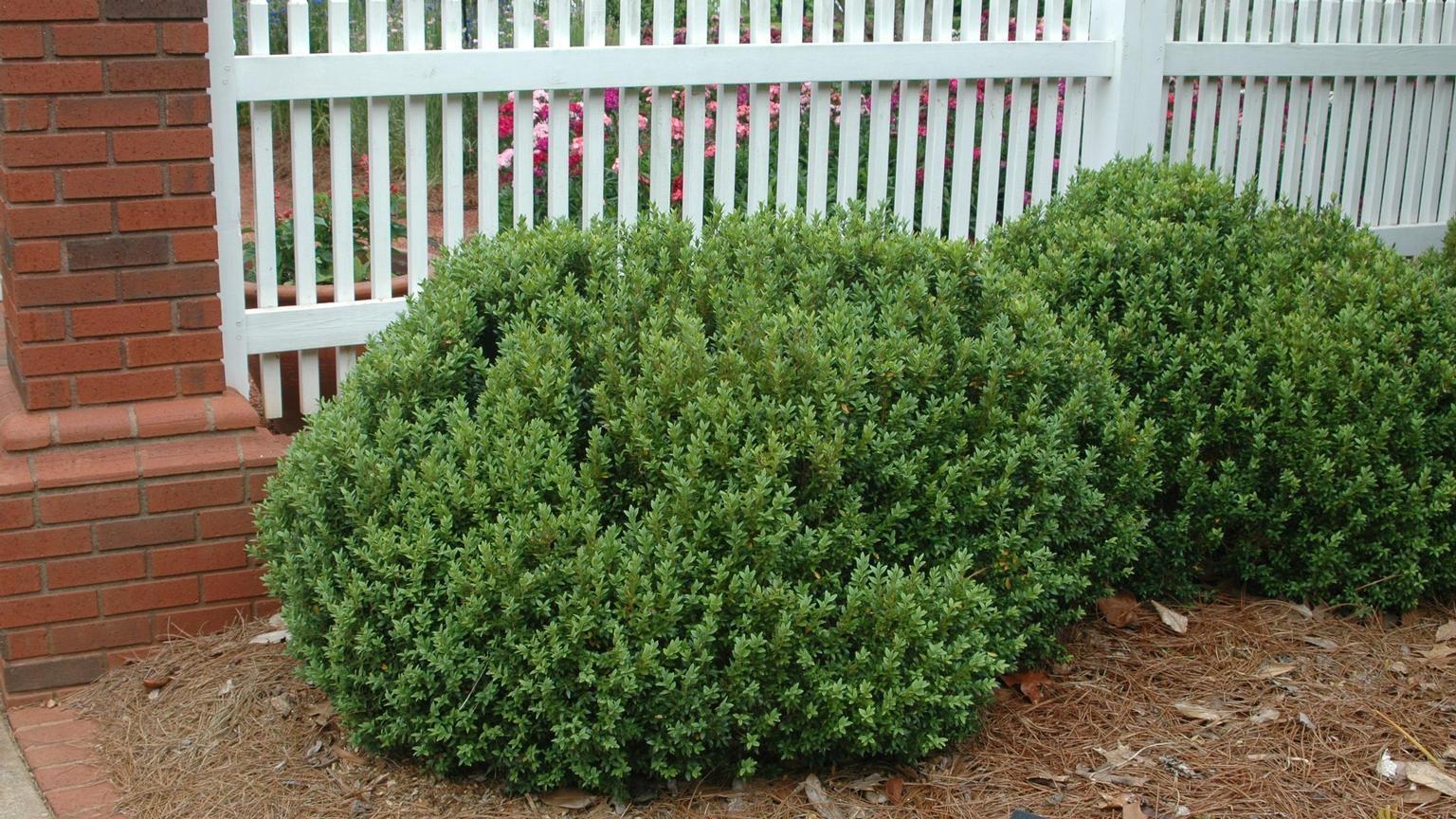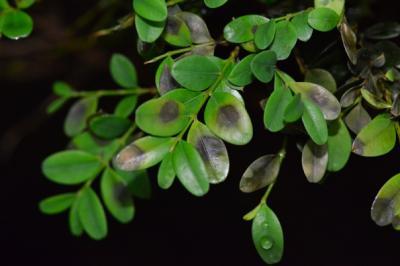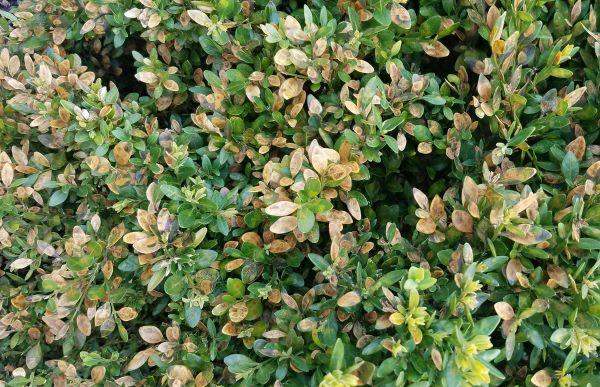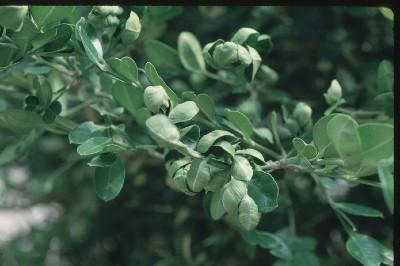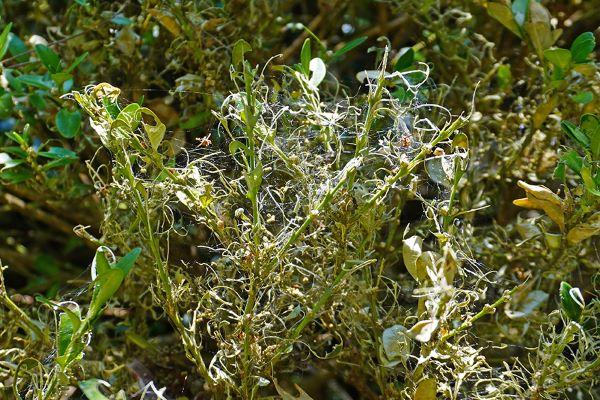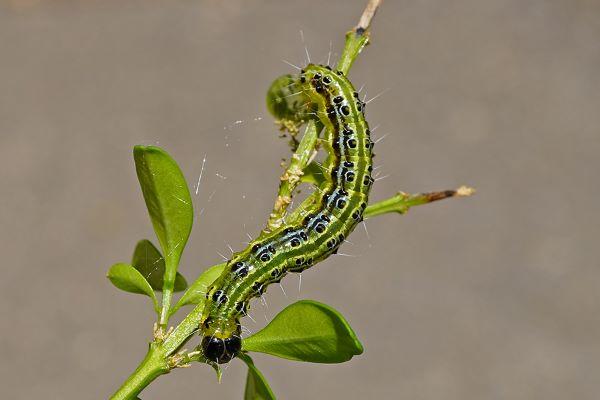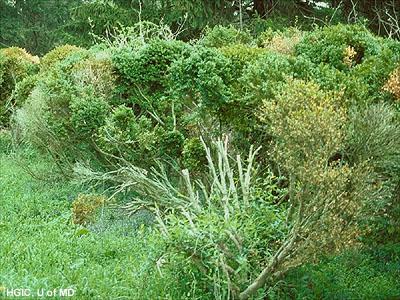
Often the term "decline" is used as a catch-all phrase for poor boxwood growth, which is caused by a combination of factors. Most often, this occurs on older, well-established shrubs.
Symptoms and causes
Symptoms include poor, off-colored growth, dieback, small leaf size, yellowing of interior foliage, and premature leaf drop. These symptoms commonly occur without any single underlying cause evident and can mimic common boxwood problems.
Stresses from drought or excess water, excessive mulch, soil compaction, deep planting, the addition of soil over the root zone, and root injury from construction all can lead to poor growth of boxwoods.
Multiple insects (mites, leafminers, scales, psyllids) and diseases (Volutella, Macrophoma leaf spot) can also contribute to the overall decline of plants.
